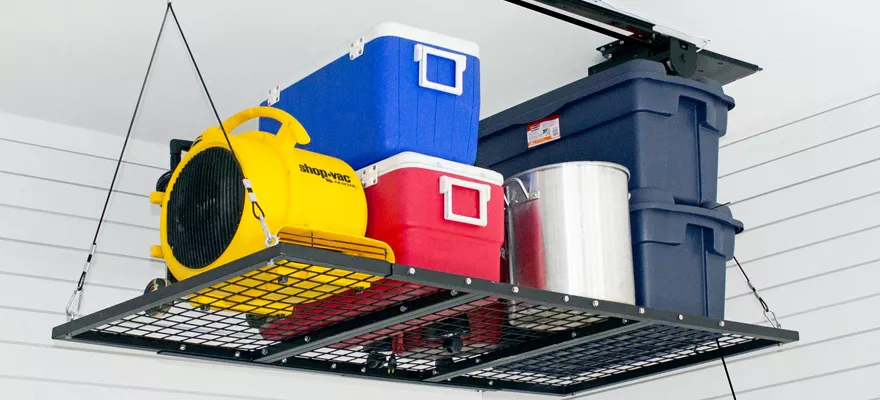From Manual to Fully Automated: Your Complete Guide to Garage Storage Lifts

In today’s world of streamlined living and compact garages, choosing the right storage lift can transform cluttered floors into organized, accessible overhead space. Whether you prefer a simple crank handle or a fully motorized smart system, understanding the differences between manual garage storage lift, electric lifts, and powered automated models will help you select the perfect solution.
1. Manual Garage Storage Lifts
Operation: Hand-cranked via a built-in winch or pull-cord mechanism.
Capacity: Typically supports 50–150 kg (110–330 lbs).
Pros:
- Lower initial cost
- No electricity required
- Simpler maintenance
Cons:
- Physical effort needed
- Slower to raise/lower heavy loads
Best for: Lightweight, infrequently accessed items like holiday bins or spare tires.
2. Motorized Storage Lifts (Electric Lifts)
Operation: Powered by an electric motor with up/down controls via remote switch or wall panel.
Capacity: Ranges from 150 kg up to 450 kg (330–990 lbs).
Features to Consider:
- Chain vs. Belt Drive: Chains are more robust; belts run quieter.
- Safety Brakes: Auto-locking brakes prevent accidental descent.
- Limit Switches: Auto-stop at full extension/retraction.
Pros:
- Effortless lifting of heavier loads
- Faster cycle times
- Often integrates with smart-home systems
Cons:
- Requires power source and wiring
- Higher upfront cost
Best for: Frequent use, heavier equipment, and users seeking convenience.
3. Automated Garage Storage Lifts
Also known as “smart lifts,” these systems add connectivity and programmability to the electric lift.
Smart Controls:
- Wi-Fi/Bluetooth App: Raise or lower via smartphone.
- Voice Activation: Integrates with Alexa, Google Assistant, or HomeKit.
- Scheduling & Alerts: Auto-return to up position at set times; notifications if overload detected.
- Advanced Safety: Load-sensing technology, real-time diagnostics, and remote firmware updates.
- Best for: Tech enthusiasts, busy households, or shared garage spaces where multiple users benefit from presets and alerts.
4. Powered Garage Storage Lifts: Choosing Your Drive Mechanism
- Electric Chain Drive: Heavy-duty, ideal for industrial or high-capacity needs.
- Electric Belt Drive: Quieter, smoother action—suits residential garages.
- Hydraulic Lifts: Rare in home garages but offer ultra-smooth operation and precise control at higher price points.
5. Key Comparison at a Glance
Feature Manual Lift Electric Lift Automated Smart Lift
Cost Low Medium High
Installation DIY-friendly Moderate (wiring) Professional often
Effort Required Manual cranking Push button App/voice command
Capacity Up to ~150 kg 150–450 kg 150–450 kg+
Safety Features Basic locking brake Auto-stop, brakes Load sensors, alerts
Smart Integration None Limited (wall switch) Full (app/voice)
6. Installation & Maintenance Tips
Verify Ceiling Support:
Ensure joists can bear combined weight of lift + maximum load. Reinforce with cross-bracing if needed.
Power Requirements:
Electric and smart models need a dedicated circuit.
Place controls within easy reach but clear of vehicle doors or other obstructions.
Routine Checks:
- Inspect cables, chains, or belts annually.
- Test limit switches and emergency brake functions every six months.
- Lubricate moving parts per manufacturer guidelines.
7. Making Your Selection
- Light & Occasional Use: Manual lift offers affordability and simplicity.
- Everyday Convenience: Motorized electric lifts strike a balance of cost and ease.
- Ultimate Control & Connectivity: Automated smart lifts deliver advanced features for tech-savvy garages.
By matching your storage items, frequency of use, and desired level of automation, you’ll unlock the full potential of your garage—keeping it clutter-free, safe, and intelligently organized. Whether you crank it yourself or say, “Hey Google, lower the lift,” there’s a garage storage solution designed to elevate your storage game.














